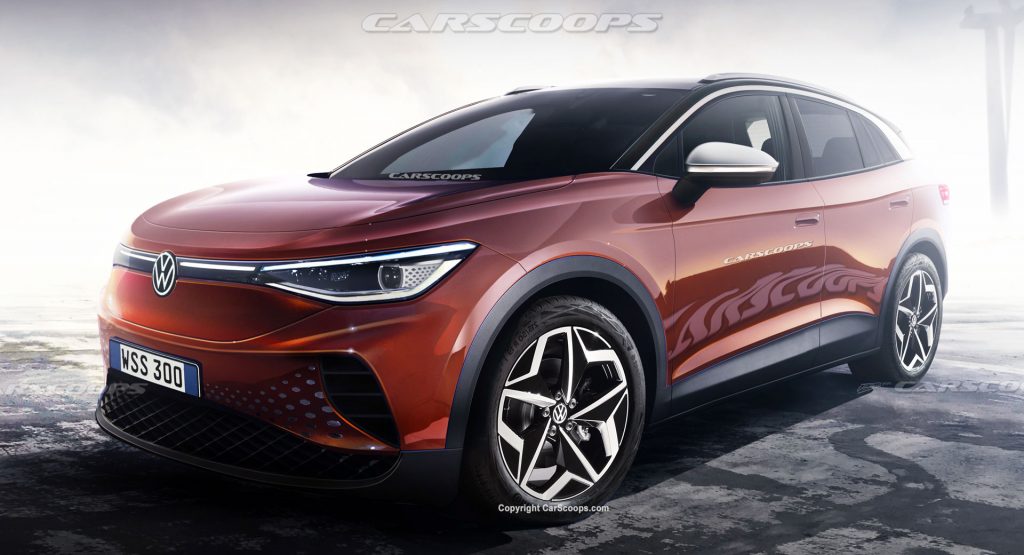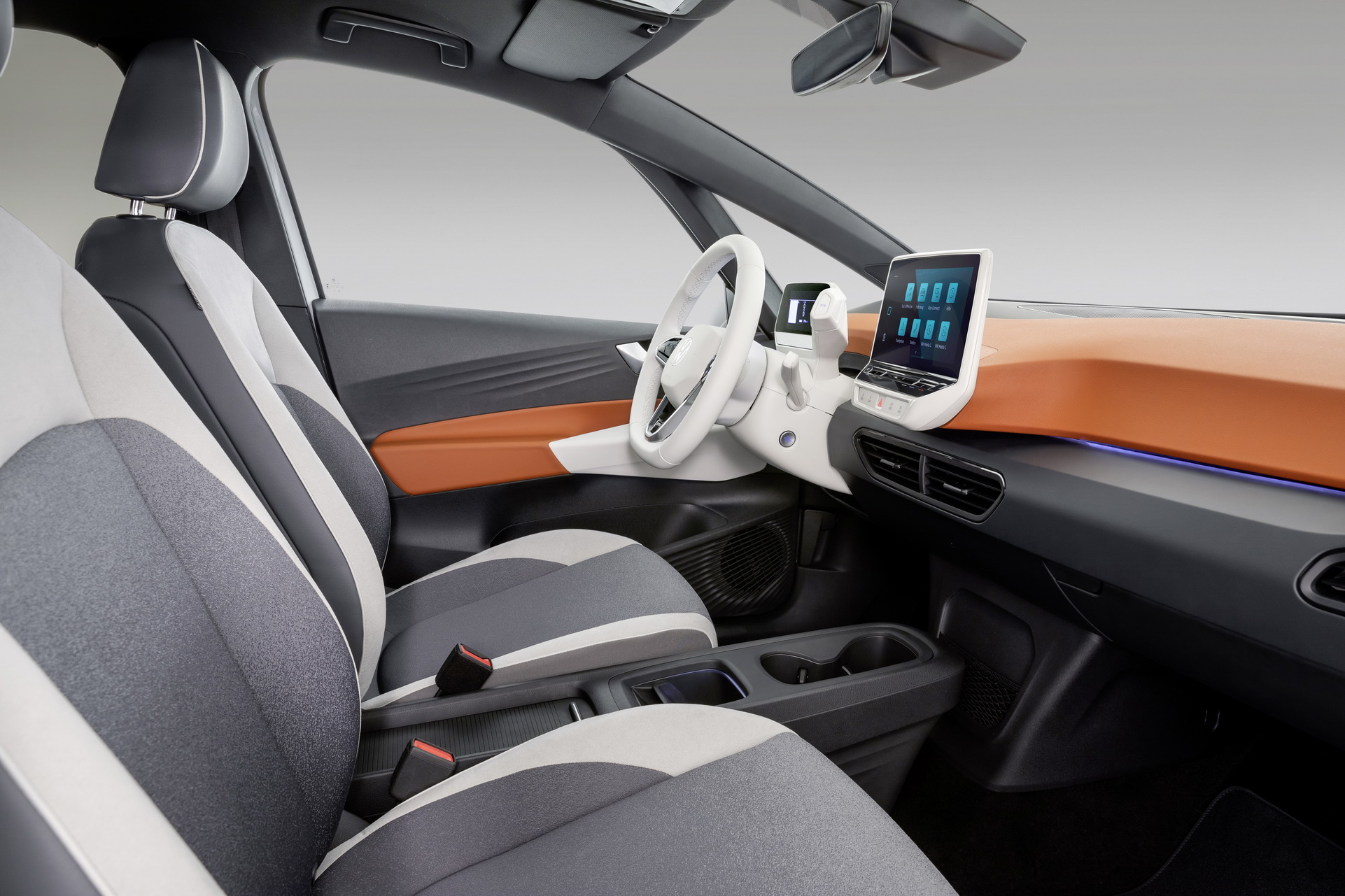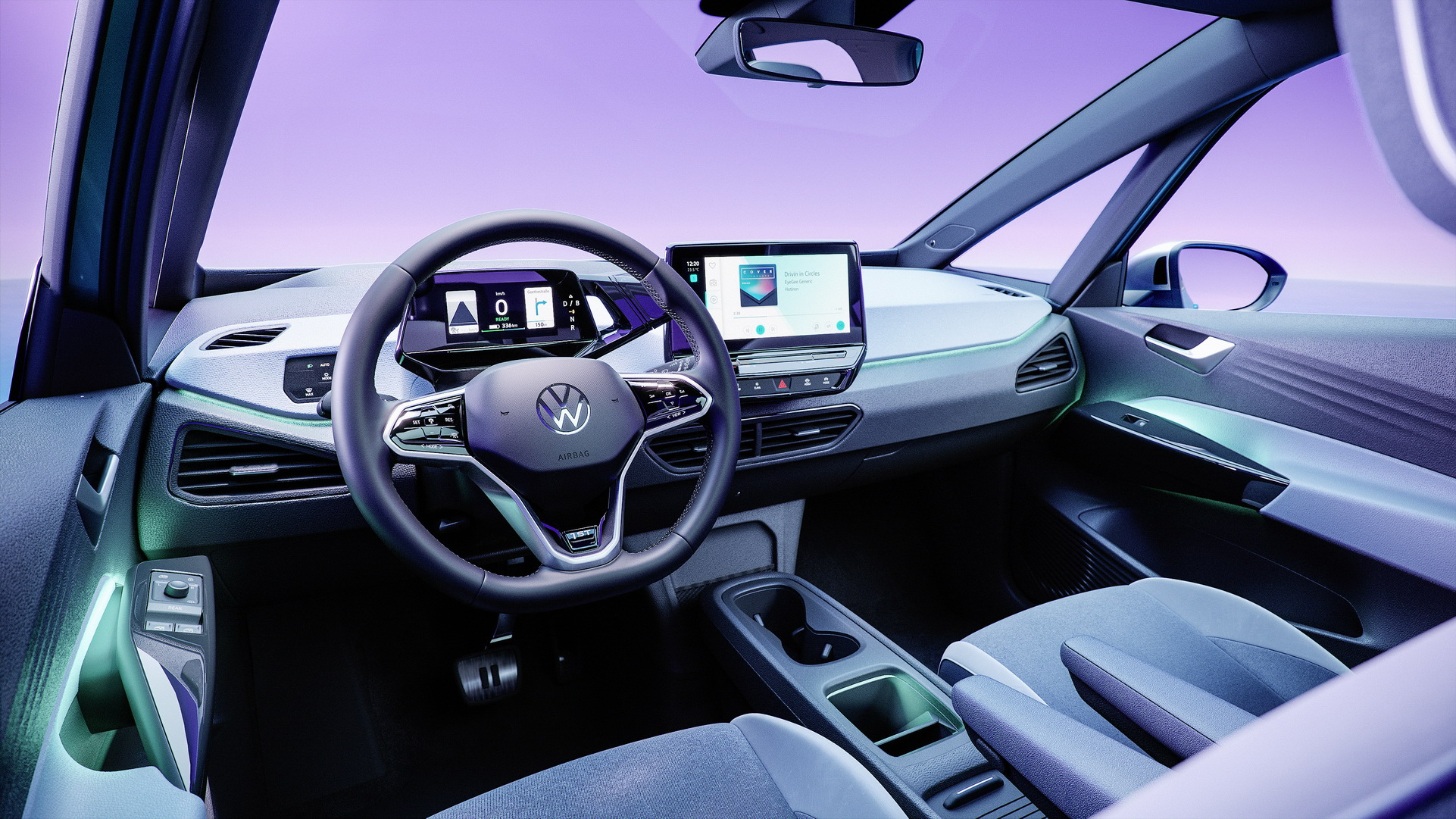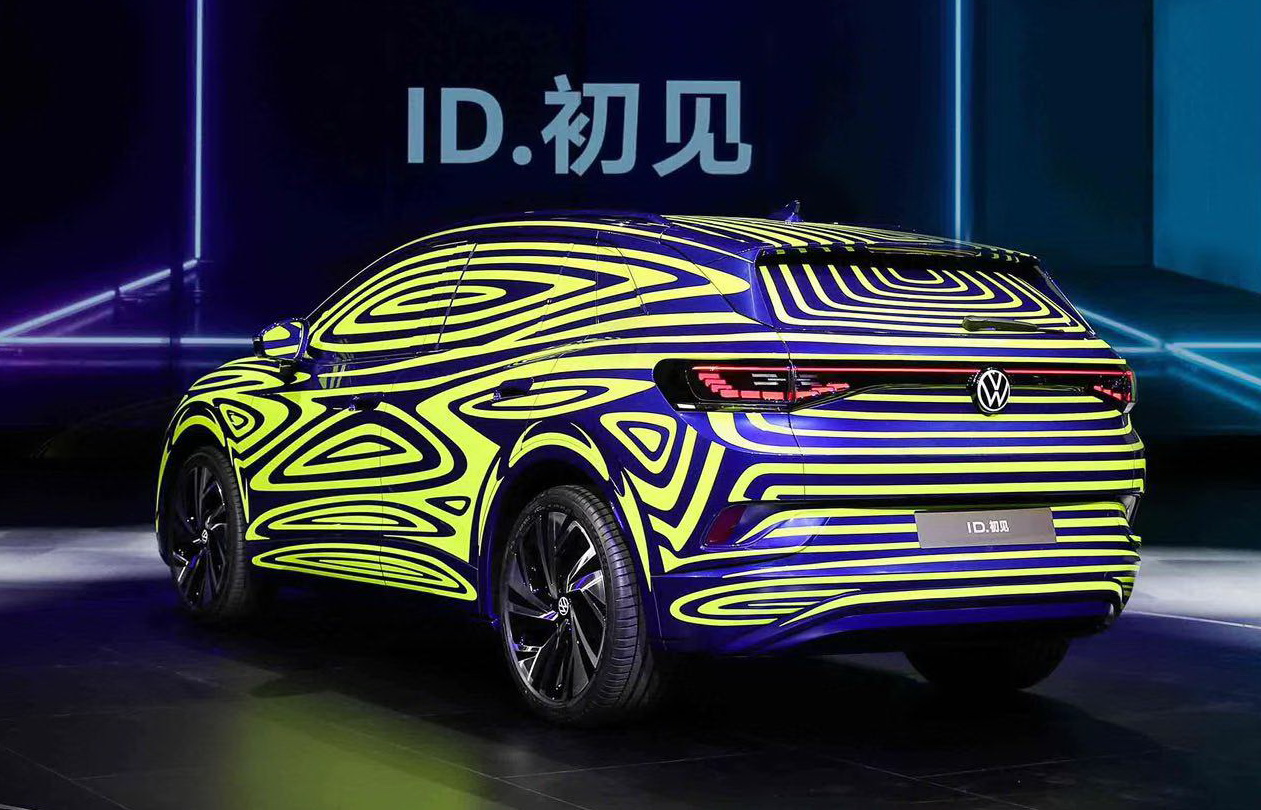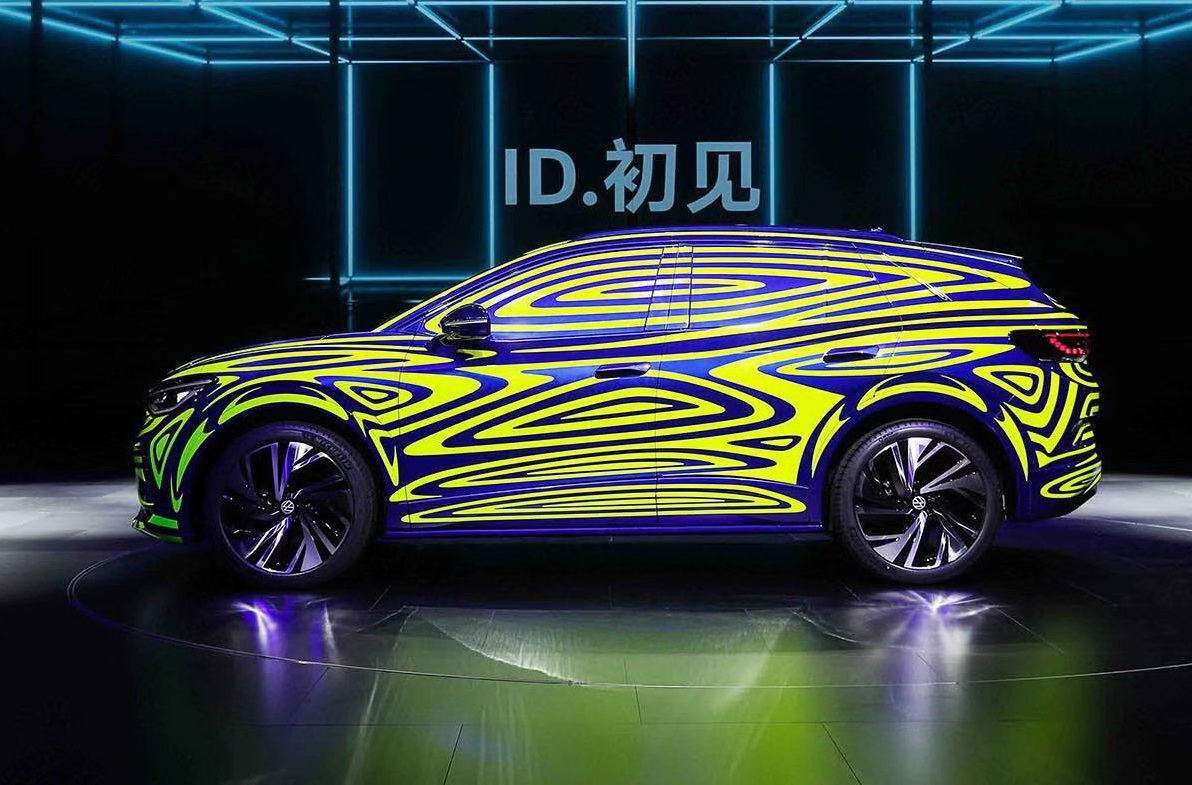This year’s Frankfurt motor show was arguably a very green-themed event with a strong focus on electrification. Volkswagen group doubled-down on this by showcasing the stunning Porsche Taycan, Audi AI:TRAIL off-road concept, and production-ready VW ID.3 hatchback.
However, tucked away in one corner of VW’s display was also another electric vehicle, the ID.4 crossover. Based on the aforementioned ID.3, you may have missed it due to its special camouflage wrap, yet peel it back and it’s largely the production variant all good to go. So let’s illustratively explore further.
Looking Familiar
First previewed by the 2017 I.D. Crozz concept, the ID.4 carries over many styling themes from the show car into production. Like the ID.3, the front-end features wrap-around LED daytime running lights to emphasis width, whilst lower front bumper has aggressive cut-outs to reduce visual mass.
Photo Renderings Copyright Carscoops / Josh Byrnes
The doors now have more traditional frames, yet the glasshouse still looks futuristic with satin trim inlays running from the base of the a-pillar right back to the rear hatch opening. Sheetmetal surfacing incorporates rugged black wheel arch moldings, and is vastly more sculptured compared to the ID.3 – this bodes well for VW’s traditionally more stylish SEAT and Skoda siblings that are yet to come.
Under The Bodywork
As with ID.3, the ID.4 will employ the same MEB electric architecture that’ll underpin a whole range of electric vehicles from VW, Skoda, SEAT and even Ford, which recently confirmed the agreement with the Germans. The battery-powered SUV appears slightly bigger than a Tiguan and will offer a larger, more practical cabin with a flat floor, no center tunnel and a higher driving position.
Cabin styling will largely mirror the bionic design ethos of ID.3 as well; with a free-standing digital instrument gauge cluster, large driver-oriented infotainment screen and colour-contrasting trim inlays. Technophiles will have access to a myriad of driver assists, augmented reality (AR) head-up display, inductive charging for smartphones, and an intelligent voice command system that works in conjunction with an LED strip embedded in the dashboard. The latter pulses, blinks and changes color to communicate various commands – shades of Knight Rider perhaps?
Electric Propulsion
Whilst the top-spec ID.3 makes do with a 201-hp electric motor driving the rear wheels, conjecture has it another motor powering the front wheels will be added for enhanced grip and performance. This setup will also help overcome the ID.4’s larger body mass compared to its traditional hatchback sibling.
We anticipate three battery options (mirroring the ID.3) ranging from 45, 60 and 77 kWh with ranges varying from 205 miles (330 km), 261 miles (420 km), and 342 miles (550 km). The largest battery can be AC/DC charged with up to 125 kW at a DC power source. Home charging will be enhanced by an ID. Charger wall box available in two versions, with remote access and different charging outputs.
Rivals & Reveal
The ID.4 will be a unique entry into playing field with very few direct rivals; sure, there is Tesla’s Model Y, Hyundai Nexo fuel cell, and upcoming Chevrolet Bolt CUV – however, they’re either priced higher or in the Bolt’s case, too small. Hyundai’s Kona and Kia e-Niro are perhaps the closest EV’s in terms of size, and pricing too.
Production will commence at VW’s Tennessee-based Chattanooga plant in 2022. An official reveal is tipped for next February’s Chicago Auto Show.
What are your thoughts on the production version of the ID.4? Share your views in the comments below.




